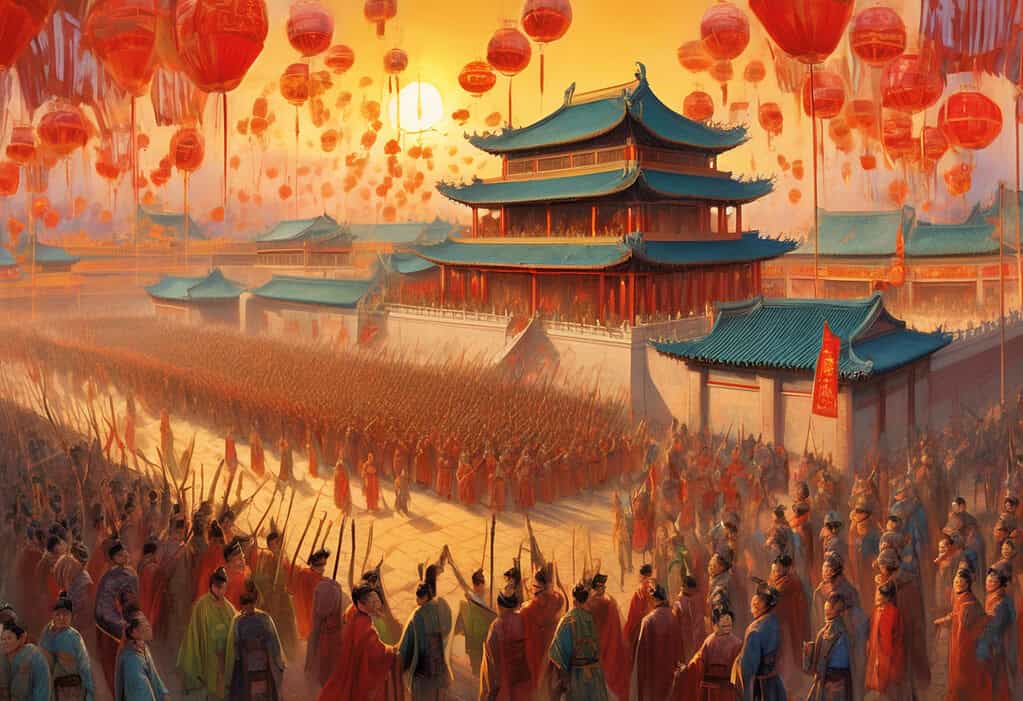The Jin Dynasty lasted from 265 to 420 CE. It was a time of political instability in China. The period saw the division of the country into the Western Jin and Eastern Jin dynasties. Despite the turmoil, the Jin Dynasty made notable advances in art, literature, and technology. It eventually fell to the invasion of the Northern Wei, marking the end of the era.
Summary List
- The Jin Dynasty ruled China from 265 to 420 CE.
- It was divided into the Western Jin (265-316 CE) and Eastern Jin (317-420 CE) periods.
- The Jin Dynasty was founded by Sima Yan, who overthrew the Wei Dynasty.
- During the Jin Dynasty, Buddhism became more popular and influential in China.
- The Jin Dynasty eventually fell to the invasion of nomadic tribes from the north.
Games And Apps
Learning Modules
Founding of the Jin Dynasty - 265 CE
In 265 CE, the Jin Dynasty was founded by Sima Yan after overthrowing the Cao Wei dynasty. With a mix of military conquests and political maneuvering, Sima Yan established a new era in Chinese history, bringing stability and prosperity to the region for nearly four centuries.
I Want To Learn This!Battle of Fei River - 383 CE
The Battle of Fei River in 383 CE marked a pivotal moment in Chinese history, as the Jin Dynasty faced off against the Former Qin Dynasty. With strategic maneuvers and fierce combat, the Jin forces emerged victorious, securing their power in the region and shaping the future of China.
I Want To Learn This!Sima Yan ascends to the throne - 290 CE
In 290 CE, Sima Yan ascended to the throne of the Jin dynasty, marking a new era of power and influence in ancient China. With his strategic wit and ambitious vision, Sima Yan's reign promised to bring prosperity and stability to the empire, but also sparked jealousy and rivalry among his rivals.
I Want To Learn This!Fall of the Eastern Jin Dynasty - 420 CE
In 420 CE, the Eastern Jin Dynasty faced internal strife and external threats that led to its downfall. As powerful warlords vied for control and barbarian invasions loomed, the once-great dynasty crumbled, marking the end of an era in Chinese history.
I Want To Learn This!Revolt of the Eight Princes - 291 CE
In the year 291 CE, the Revolt of the Eight Princes shook the foundations of the Jin Dynasty in ancient China. Fueled by greed and ambition, these powerful princes turned against each other in a bloody struggle for power, leaving a trail of destruction in their wake.
I Want To Learn This!Battle of Xiangyang - 364 CE
The Battle of Xiangyang in 364 CE was a pivotal conflict between the Jin Dynasty and the Former Qin Dynasty, with both sides vying for control of central China. The fierce fighting and strategic maneuvers showcased the military prowess of both armies, ultimately shaping the course of Chinese history.
I Want To Learn This!Sima Shi becomes regent - 265 CE
After the death of his father, Sima Shi rises to power as regent of the kingdom in 265 CE. With cunning intellect and strategic prowess, he navigates the treacherous political landscape, consolidating his power and solidifying his legacy as a formidable leader in ancient China.
I Want To Learn This!Massacre of Wang Dun - 303 CE
In the year 303 CE, the Massacre of Wang Dun shook the Jin Dynasty to its core. Fueled by political intrigue and betrayal, this brutal event left a lasting legacy of fear and uncertainty in its wake. Discover the shocking details of this dark chapter in Chinese history.
I Want To Learn This!Siege of Jiankang - 322 CE
In 322 CE, the Siege of Jiankang marked the climax of a bitter power struggle between the Jin Dynasty and the Wu Kingdom. As the walls of the city were breached and the fate of the empire hung in the balance, alliances were shattered and betrayal ran rampant in the heart of China.
I Want To Learn This!Sima Zhao's usurpation - 266 CE
In 266 CE, Sima Zhao seized power from the Cao Wei dynasty, marking the beginning of the Jin dynasty in China. His calculated and ruthless usurpation of the throne set the stage for a new era of political intrigue and power struggles in ancient China.
I Want To Learn This!












